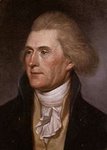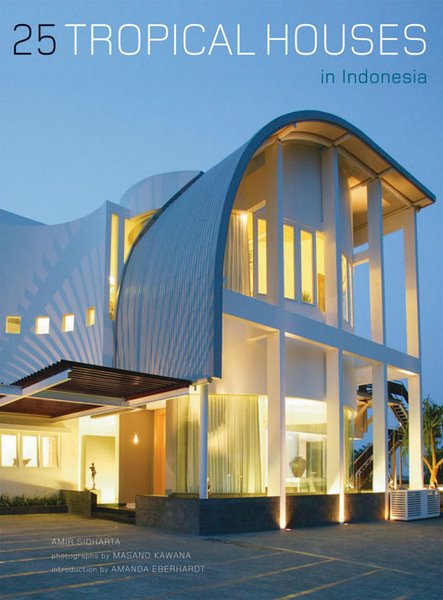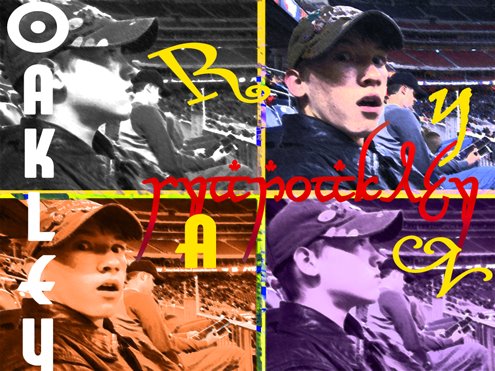
Thomas Edison
From Wikipedia, the free encyclopedia
Thomas Alva Edison
"Genius is one percent inspiration, ninety-nine percent perspiration." - Thomas Alva
Edison, Harper's Monthly (September 1931)
Born: February 11, 1847(1847-02-11)
Milan, Ohio
Died: October 18, 1931 (aged 84)
West Orange, New Jersey
Occupation: Inventor, entrepreneur
Spouse: Mary Edison, Mina Edison
Thomas Alva Edison (February 11, 1847 – October 18, 1931) was an American inventor and businessman who developed many devices which greatly influenced life around the world, including the phonograph and a long lasting light bulb. Dubbed "The Wizard of Menlo Park" by a newspaper reporter, he was one of the first inventors to apply the principles of mass production to the process of invention, and therefore is often credited with the creation of the first industrial research laboratory.
Edison is considered one of the most prolific inventors in history, holding 1,093 U.S. patents in his name, as well as many patents in the United Kingdom, France and Germany.
Media inventions
The key to Edison's fortunes was telegraphy. With knowledge gained from years of working as a telegraph operator, he learned the basics of electricity. This allowed him to make his early fortune with the stock ticker, the first electricity-based broadcast system. Edison patented the sound recording and reproducing phonograph (or gramophone in British English) in 1878. Edison was also granted a patent for the motion picture camera or "Kinetograph". He did the electromechanical design, while his employee W.K.L. Dickson, a photographer, worked on the photographic and optical development. Much of the credit for the invention belongs to Dickson. [21] In 1891, Thomas Edison built a Kinetoscope, or peep-hole viewer. This device was installed in penny arcades, where people could watch short, simple films. The kinetograph and kinetoscope were both first publicly exhibited May 20, 1891. [21]
On August 9, 1892, Edison received a patent for a two-way telegraph. In April 1896, Thomas Armat's Vitascope, manufactured by the Edison factory and marketed in Edison's name, was used to project motion pictures in public screenings in New York City. Later he exhibited motion pictures with voice soundtrack on cylinder recordings, mechanically synchronized with the film.
Officially the kinetoscope entered in Europe when the rich American Businessman Irving T. Bush (1869-1948) bought from the Continental Commerce Company of Franck Z. Maguire and Joseph D. Bachus a dozen machines. Bush placed from October 17, 1894 on the first kinetoscopes in London. At the same time the French company Kinétoscope Edison Michel et Alexis Werner bought these machines for the market in France. In the last three months of 1894 The Continental Commerce Company sold hundreds of kinetoscopes in Europe (i.e. the Netherlands and Italy). In Germany and in Austria-Hungary the kinetoscope was introduced by the Deutsche-österreichische-Edison-Kinetoscop Gesellschaft, founded by the Ludwig Stollwerck [22] of the Schokoladen-Süsswarenfabrik Stollwerck & Co of Cologne. The first kinetoscopes arrived in Belgium at the Fairs in early 1895. The Edison's Kinétoscope Français, a Belgian company, was founded in Brussels on January 15, 1895 with the rights to sell the kinetoscopes in Monaco, France and the French colonies. The main investors in this company were Belgian industrialists. On May 14, 1895 the Edison's Kinétoscope Belge was founded in Brussels. The businessman Ladislas-Victor Lewitzki, living in London but active in Belgium and France, took the initiative in starting this business. He had contacts with Leon Gaumont and the American Mutoscope and Biograph Co. In 1898 he also became shareholder of the Biograph and Mutoscope Company for France. [23]
In 1908, Edison started the Motion Picture Patents Company, which was a conglomerate of nine major film studios (commonly known as the Edison Trust). Thomas Edison was the first honorary fellow of the Acoustical Society of America, which was founded in 1929.
<---Posts--->
------------------------------------------------------
Wednesday, May 16, 2007
Subscribe to:
Post Comments (Atom)













No comments:
Post a Comment